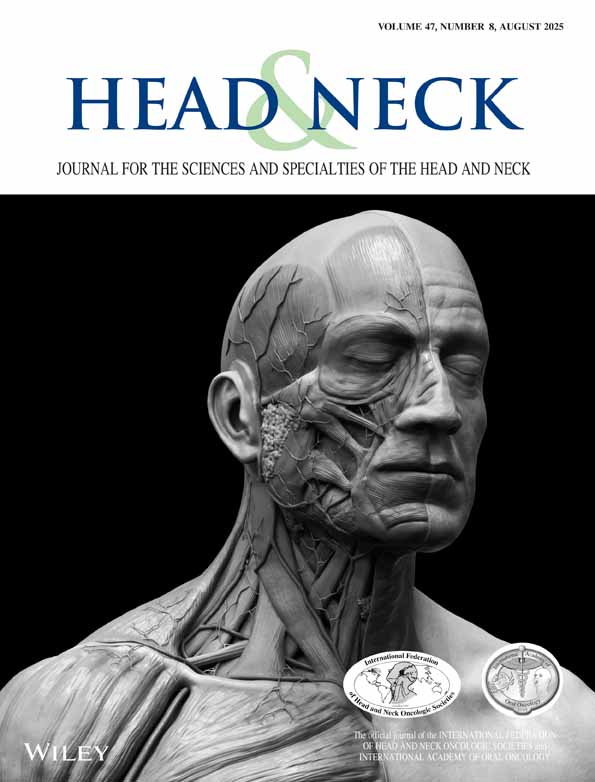Angiogenesis and skin carcinomas with skull base invasion: a case–control study†
Presented at the Sixth Research Workshop on the Biology, Prevention and Treatment of Head and Neck Cancer. October 9–13, 2002, McLean, Virginia
Abstract
Background.
Some skin carcinomas may be very aggressive. Intensity of angiogenesis, measured by intratumoral vessel density using expression of CD34, has been associated with tumor aggressiveness. In this study, the expression of CD34 in basal cell carcinomas ( BCCs) and squamous cell carcinomas (SCCs) with skull base invasion was compared with that in tumors with good outcome.
Methods.
Expression of CD34 was graded as mild, moderate, and intense, in 24 BCCs and 11 SCCs with skull base invasion. The control group included 23 BCCs and 10 SCCs.
Results.
Intense expression of CD34 was noted in 25.00% of BCCs with skull base invasion, compared with 4.35% in the control group (p = .058). Regarding SCCs, intense expression of CD34 was found in 54.55% of aggressive tumors, compared with 10.00% in the control group (p = .133).
Conclusions.
A trend toward denser microvascular angiogenesis was observed in both BCCs and SCCs with skull base invasion compared with less aggressive controls. © 2004 Wiley Periodicals, Inc. Head Neck 26: 396–400, 2004




